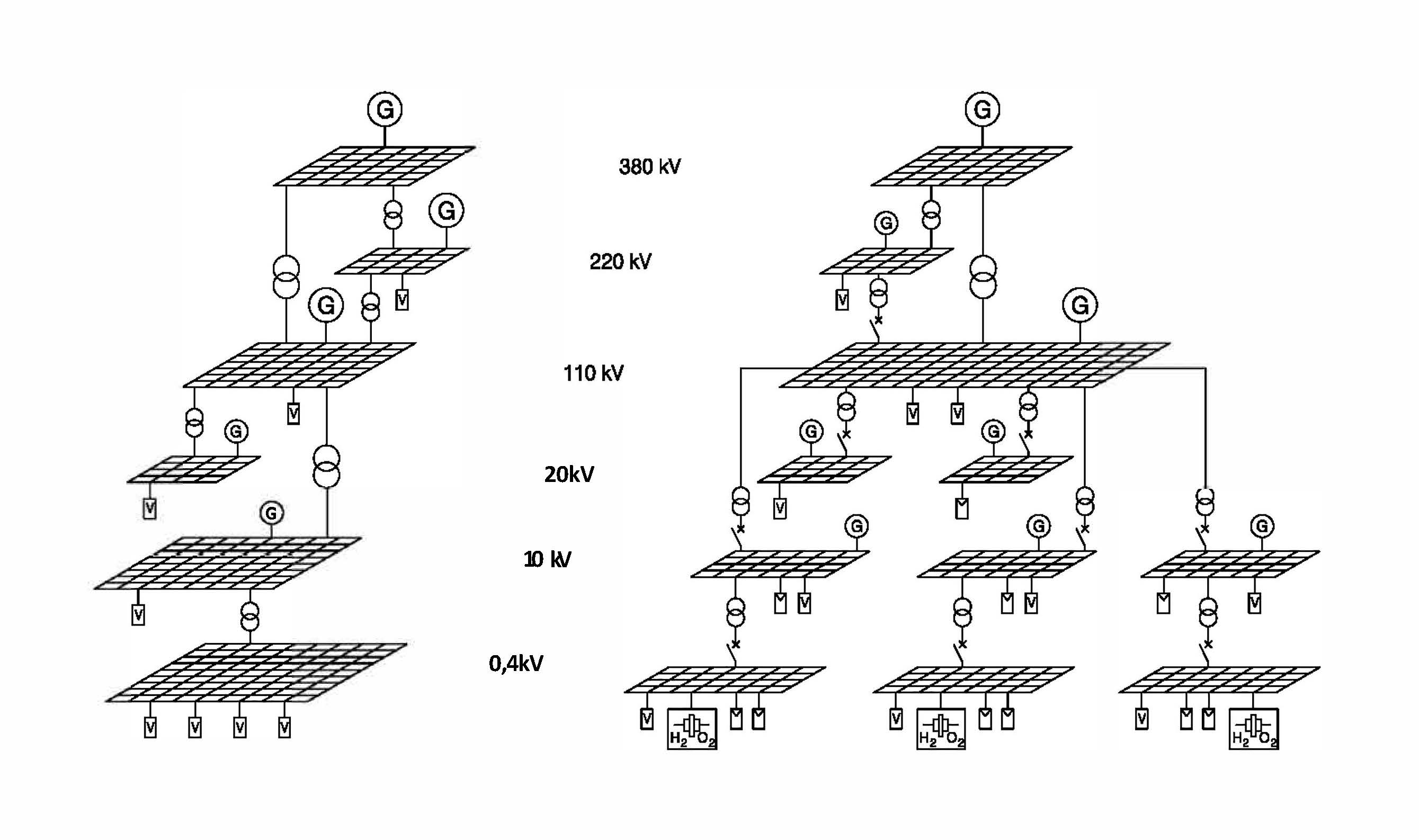Current and perspective situation of the German energy supply system
The raising share of renewables in power generation affects the power flow direction of the energy supply system as well as its network structure. In traditional energy supply systems with large power plants (left Figure) the power flows downwards from the transmission network (high-voltage level) to consumers in the distribution system (mid-voltage and low-voltage level). Due to the high number of renewables, connected to all voltage levels, the power flow direction is no longer predictable. Thus, the power flow can reverse totally. This change is accompanied by a grid expansion that results in a new supply structure (Figure right).
The system reliability and safety are the major objectives of any network operator. Hence, the mains protection has to detect and switch off failures fast, selective, and safe to guarantee the supply reliability and protection of individuals.

Already today the mains protection has to be adapted to the change in power flow and generation. Additional problems which affect the protection principles have to be solved. These problems will aggravate due to the decentralisation of power generation.
The affecting parameters are:
- lower short-circuit current capacity,
- weather depending short-circuit current capacity,
- intended islanding operation of grid areas,
- changing network impedance.
These parameters and their impact on the mains protection system are evaluated in this cooperation project. Also new protection concepts, including new detection methods for failures, form a main part of the research work.
Contact Persons:
Prof. Dr.-Ing. habil. Detlef Schulz (subproject manager)
Faculty of Electrical Engineering
Elektrical Power Systems
Cooperation Partner:
Letzte Änderung: 27. May 2021
